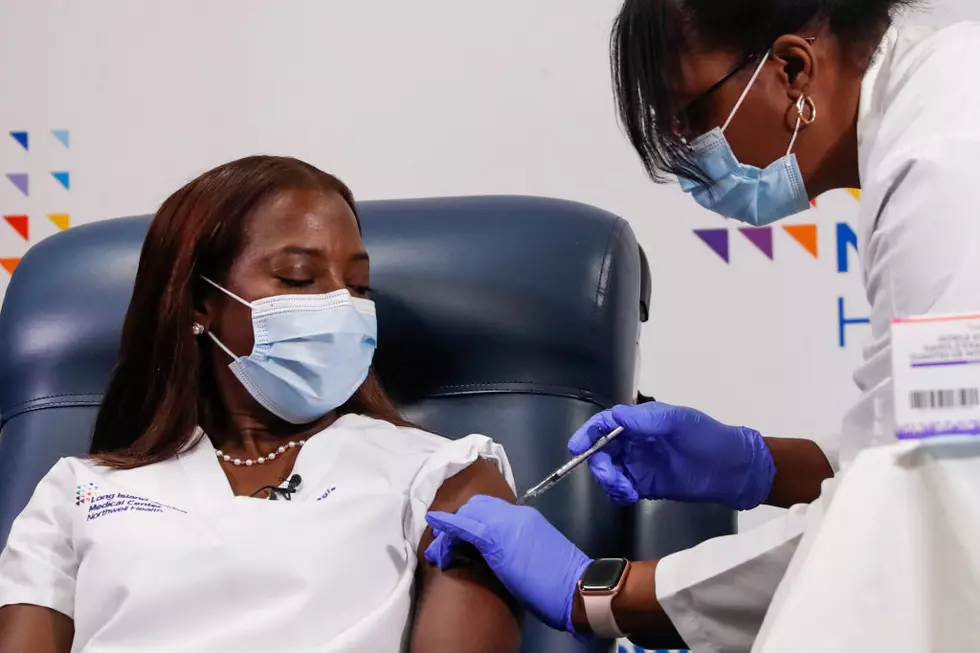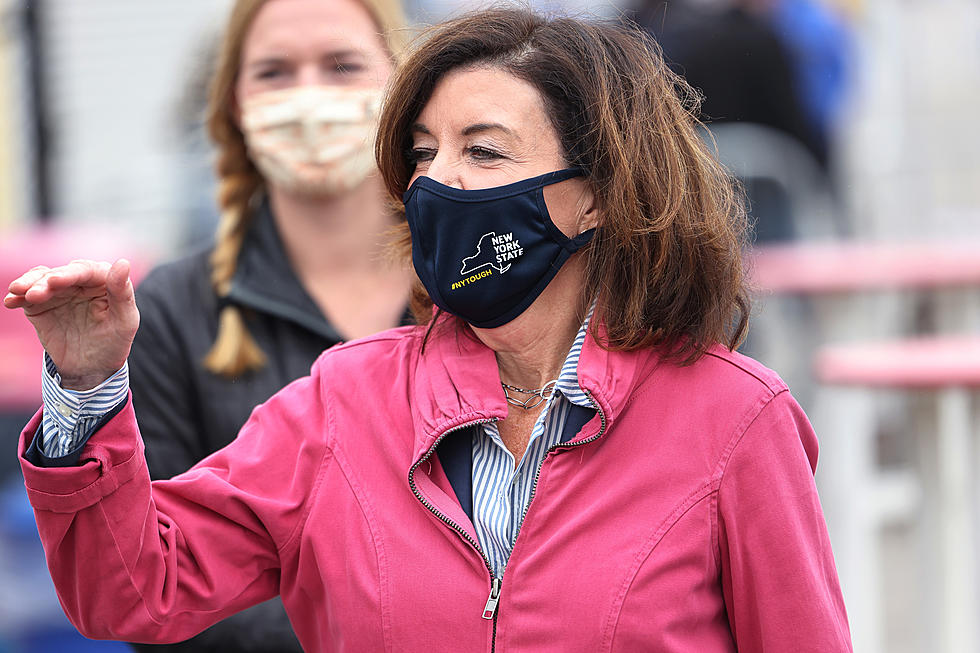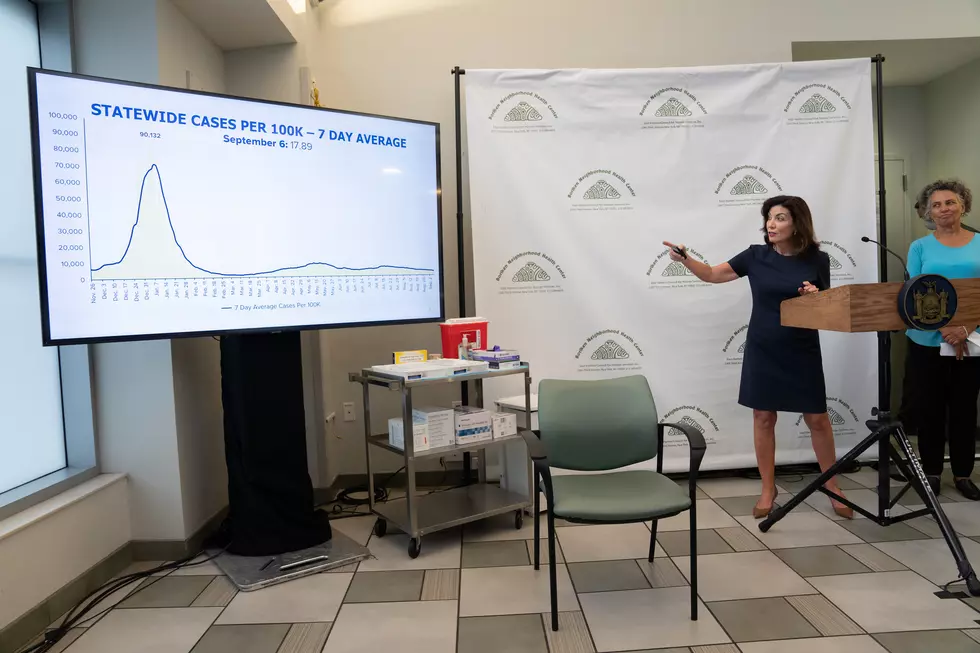
Rules for New York Bars, Restaurants in Phase 3 of Reopening
There will be fewer restrictions for New York bars and restaurants as well as customers in Phase 3. However, masks will still need to be worn.

Enter your number to get our free mobile app
Below are guidelines for these businesses according to the New York State Forward plan.
Physical Distancing
- Limit indoor capacity to no more than 50% of maximum occupancy, exclusive of employees.
- Limit outdoor capacity to the number of tables that can be safely and appropriately arranged, such that each table is a minimum of 6 ft. away from another.
- All indoor and outdoor tables with seating for customers must be separated by a minimum of 6 ft. in all directions.
- Wherever distancing is not feasible between tables, physical barriers must be enacted between such tables. Barriers must be at least 5 ft. in height and not block emergency and/or fire exits.
- Regardless of physical distance, employees must wear an acceptable face covering at all times.
- Patrons must wear face coverings at all times, except while seated; provided that the patron is over the age of 2 and able to medically tolerate such covering. Individuals seated at the same table must be members of the same party (but may be from different households), with a maximum of 10 people per table.
- Seating in bar areas and communal tables are only permitted if at least 6 ft. can be maintained between parties.
- Clearly signal 6 ft. spacing in any lines for customers waiting to order, pick-up food, be seated, or use the restroom, as well as in any pick-up or payment location.
- Designate entrances/exits for customers and separate entrances/exits for employees, where possible. Limit in-person gatherings (e.g. staff meetings) to the greatest extent possible. Establish designated areas for vendor pickups and/or deliveries, limiting contact to the extent possible
Protective Equipment
- Provide workers with an acceptable face covering at no cost to the employee and have an adequate supply of coverings in case of need for replacement.
- Acceptable face coverings include but are not limited to cloth (e.g. homemade sewn, quick cut, bandana), surgical masks, and face shields.
- Ensure all staff wear face coverings at all times and that they practice hand hygiene and use bare hand barriers consistent with state and local sanitary codes.
- If employees wear gloves during non-food preparation activities, ensure they replace gloves frequently, and encourage them to change gloves when switching tasks (e.g. serving customers to prerolling silverware).
- If employees do not wear gloves, ensure they frequently wash their hands with soap/water. Clean, replace, and prohibit sharing of face coverings. Consult the CDC guidance for additional information on cloth face coverings and other types of personal protective equipment (PPE), as well as instructions on use and cleaning.
- Train employees on how to don, doff, clean (as applicable), and discard PPE .
- Limit the sharing of objects (e.g. kitchen tools, pens, pads), as well as the touching of shared surfaces (e.g. doorknobs, keypads, touch screens); or, require workers to wear gloves when in contact with shared objects or frequently touched surfaces; or, require workers to perform hand hygiene before and after contact.
- Ensure that employees who are bussing tables wash their hands with soap/water and, if they wear gloves, replace the gloves before and after cleaning and disinfecting tables.
Hygiene and Cleaning
- Adhere to hygiene, cleaning, and disinfection requirements from the Centers for Disease Control and Prevention (CDC) and Department of Health (DOH) and maintain logs that document date, time, and scope of cleaning.
- Provide and maintain hand hygiene stations including handwashing with soap, running warm water, and disposable paper towels, as well as an alcohol-based hand sanitizer containing 60% or more alcohol for areas where handwashing is not available or practical.
- Provide and encourage employees to use cleaning and disinfection supplies for shared surfaces for use before and after use of these surfaces, followed by hand hygiene.
- Regularly clean and disinfect the establishment and more frequently clean and disinfect high risk areas used by many individuals and for frequently touched surfaces (e.g. restrooms).
- Cleaning and disinfection must be rigorous and ongoing and should occur at least after each shift, daily, or more frequently if needed.
- Ensure that equipment is regularly cleaned and disinfected using registered disinfectants, including at least as often as employees change workstations. Refer Department of Environmental Conservation (DEC) products identified by the Environmental Protection Agency (EPA) as effective against COVID-19.
- Before returning to work, complete pre-return checks and assessments of kitchen systems to ensure a healthy and safe environment.
- Minimize sharing of kitchen equipment between staff (e.g. knives, pots, rags/towels), where possible.
- Do not provide customers with devices (e.g. buzzers) to provide alerts to customers that seating or an order is available, unless such devices are thoroughly cleaned and disinfected between each use
- Provide cleaning and disinfection of exposed areas in the event of an individual is confirmed to have COVID19, with such cleaning and disinfection to include, at a minimum, all heavy transit areas and high-touch surfaces .
- Ensure all condiments provided directly to customers are in single-use disposable containers or reusable containers that are regularly cleaned/disinfected.
- If non-disposable menus are used, clean and disinfect the menus between each party’s use. Use pre-packaged silverware or pre-rolled silverware. Silverware must be pre-rolled while wearing masks and gloves.
- For take-out/delivery:
- • Provide hand hygiene stations for customers waiting for food and/or drinks.
- Ensure staff wash hands with soap/water or use hand sanitizer; if staff use gloves, regularly replace them.
- If pick-up/delivery is indoors, ensure windows/doors are opened to allow for ventilation.
Communication
- Affirm you have reviewed and understand the state-issued industry guidelines, and that you will implement them.
- Post signage to remind employees and patrons to adhere to proper hygiene, social distancing rules, appropriate use of PPE, and cleaning and disinfection protocols.
- Immediately notify the state and local health department if a worker was in close contact with others and tests positive for COVID-19.
- Cooperate with contact tracing efforts, including notification of potential contacts in the workplace, while maintaining confidentiality required by state and federal law and regulations.
- Conspicuously post completed safety plans on site.
Screening
- Implement mandatory daily health screening practices (e.g. questionnaire, temperature check) of their employees and, where practicable, vendors, but such screening shall not be mandated for customers and delivery personnel
- At a minimum, screening must determine whether the employee or vendor has had: 1) COVID-19 symptoms in past 14 days, (2) positive COVID-19 test in past 14 days, and/or (3) close contact with confirmed or suspected COVID-19 case in past 14 days.
- Designate a point-of-contact as the party for workers to inform if they later are experiencing COVID-19-related symptoms, as noted in the questionnaire.
New Rules For New York Hair Salons Tops This Weeks Hudson Valley News
More From WRRV-WRRB









